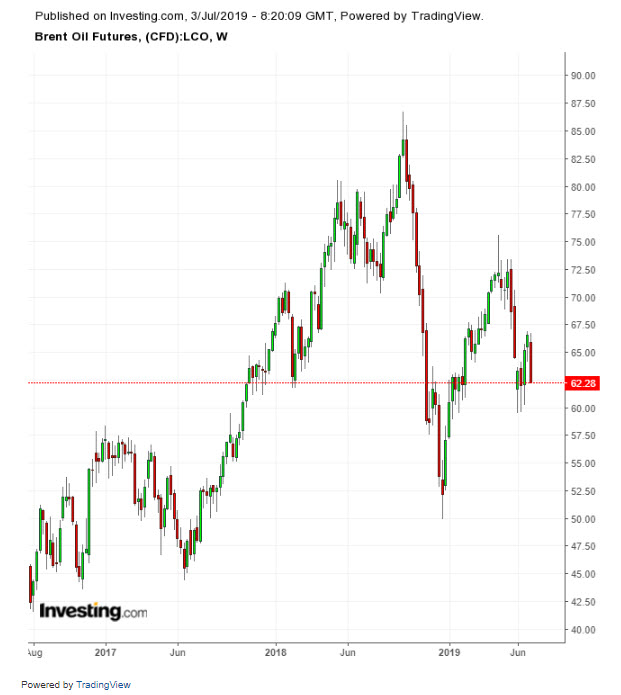At this week’s OPEC meeting in Vienna, the organization exacerbated its unimportance in the oil market—at least for the time being. OPEC and its OPEC+ partners announced a 9-month extension of the previously instituted production quotas, but the market essentially ignored this decision.
Oil prices rose early on Monday, though not remarkably. In fact, the good news concerning U.S.-China trade negotiations likely influenced prices more than OPEC decisions. On Tuesday, after the OPEC+ partners signed on to the quotas for 9 months and agreed to a new charter, oil prices actually dropped. By the end of the day on Tuesday, Brent dropped 3%.

While the market reaction to OPEC’s decision was muted in part because the decision was already expected, the truth is that the market knows OPEC’s quotas are not significantly impacting oil supply. A comparison of the production numbers from October 2016—two months before OPEC and OPEC+ started reducing production—and the numbers from May 2019 reveals that OPEC action is not a driver of supply changes.
Almost 70% of the drop in OPEC production from October 2016 to May 2019 comes from Iran and Venezuela. In other words, these cuts are due to U.S. sanctions and actual inability to produce, not voluntary reduction through negotiated OPEC quotas. An additional 7% of the OPEC cuts come from production decreases from Angola, which are largely involuntary as well. Production has dropped 1.525 mbpd in that period in Iran, 1.347 mbpd in Venezuela and 0.303 mbpd in Angola. The rest of OPEC has dropped less than 1.3 mbpd combined. Thus, it is likely that more than 75% of OPEC’s decreased production would happen without OPEC involvement.
The total global production is essentially the same as it was more than two years ago. In Q4 2016, production globally was about 99 mbpd. In Q1 2019, production was just under 100 mbpd. Meanwhile, between the end of October 2016 and the end of May 2019, the U.S. increased its production 3.9 mbpd or 45.5%. The increase in U.S. production is much more significant to the market than the voluntary decrease from OPEC.
With just a minor voluntary cut from OPEC (apart from forced cuts from Iran, Venezuela and Angola), Saudi Arabia has actually accounted for about 85% of the voluntary OPEC production drop since late 2016. In fact, Iraq, Gabon, and the UAE all produced more oil in May 2019 than they did in October 2016.
OPEC has tied itself to the OPEC+ partnership as if it is acknowledging that it cannot stabilize the market on its own. The organization relies on these non-OPEC countries to give its cuts some heft, but these countries are not reliable. Russia, in particular, has proven that it cannot be trusted to abide by agreed-upon quotas. Moreover, the 9-month agreement made this week means that OPEC is even less influential to price calculations, because, if the agreement holds, it will remain in place all the way through March 2020.
At the same time, there is nothing OPEC can do to counteract U.S. production. The relatively minor production fluctuations that OPEC is capable of creating at this point are not determinative. The best things to happen to OPEC in the last few years have been factors beyond their control, including sanctions and problems faced by a few OPEC countries.
This is not to say that OPEC will remain irrelevant to the oil market, but currently, there is little it could willingly do to drive prices—either up or down. While this week's meeting was inconsequential, the situation can change rapidly. Next year could be very different.
